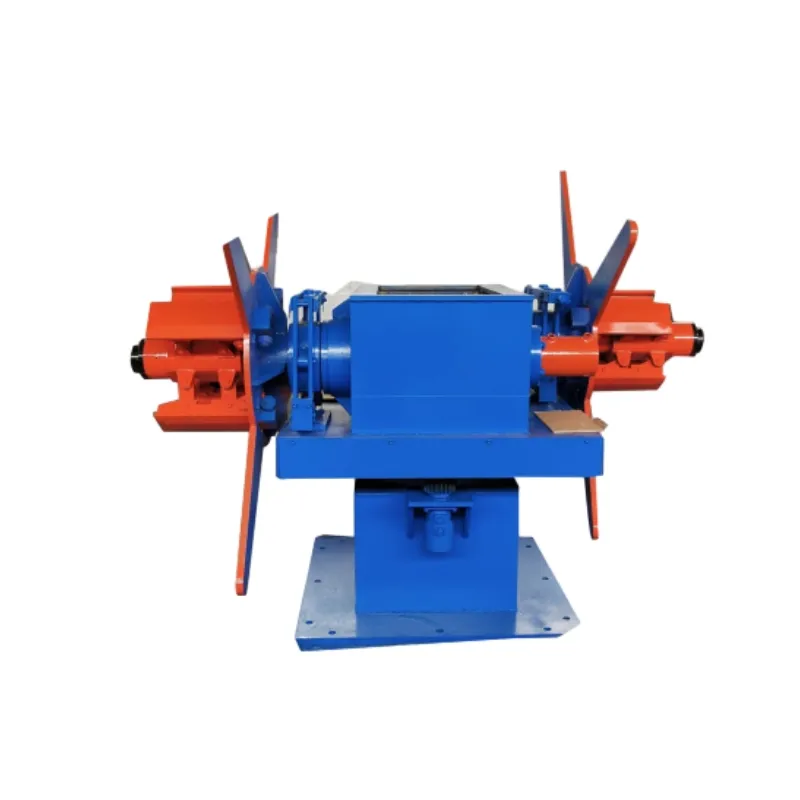stud and track roll forming machine
Understanding Stud and Track Roll Forming Machines
Roll forming is a continuous bending operation in which long strips of metal are gradually shaped into desired profiles. Among the various applications of roll forming, the production of stud and track components has become increasingly important in the construction industry. Stud and track roll forming machines are specialized equipment designed to manufacture these critical components efficiently and accurately.
What Are Studs and Tracks?
In construction, studs are vertical framing members that help support various structures, while tracks serve as horizontal members that hold these studs in place. Together, they form the skeleton of walls and ceilings, typically made from metal in modern construction. This combination provides durability and structural integrity, making it ideal for both residential and commercial properties.
The Role of Roll Forming Machines
Stud and track roll forming machines work by feeding metal strips through a series of rollers. Each roller incrementally bends the metal until it reaches the desired shape. The process is highly efficient, allowing manufacturers to produce long lengths of metal studs and tracks with precision. By using advanced technology, such machines can create profiles that meet specific engineering requirements while minimizing waste.
Key Features of Stud and Track Roll Forming Machines
1. Modularity Many roll forming machines can be customized to accommodate different profiles. This modularity allows manufacturers to switch between different designs without the need for extensive reconfiguration, making it easier to meet changing market demands.
2. High Precision Precision is critical when manufacturing stud and track components. Roll forming machines are equipped with quality control systems that ensure each strip is formed correctly to avoid issues during installation.
3. Speed and Efficiency These machines can produce large quantities of studs and tracks in a relatively short time. This efficiency is crucial in the construction industry, where time is often of the essence.
4. Material Versatility Stud and track roll forming machines can work with various materials, including galvanized steel, aluminum, and other alloys. This versatility allows manufacturers to cater to different market segments and client preferences.
stud and track roll forming machine

5. Integrated Cutting and Punching Modern roll forming machines often include features for cutting and punching. This integration reduces the need for additional processes, streamlining production and enhancing efficiency.
Advantages of Using Stud and Track Roll Forming Machines
1. Cost-Effective Production The automated nature of roll forming allows for high volume production at a low cost. This cost-effectiveness is passed on to builders and consumers.
2. Material Optimization Roll forming produces minimal waste compared to other manufacturing processes. This efficiency not only lowers costs but also aligns with sustainable practices, which are increasingly important in the modern construction landscape.
3. Structural Strength Because the process creates consistently shaped parts, the resulting studs and tracks often exhibit enhanced structural strength. This contributes to the overall safety and longevity of the building.
4. Quick Prototyping With the capability to produce custom profiles quickly, manufacturers can create prototypes to meet specific project requirements without long lead times.
Applications in the Construction Industry
Stud and track systems are widely used in various applications, including commercial buildings, residential homes, and industrial facilities. The versatility of these systems makes them suitable for both high-rise structures and low-rise developments. Furthermore, gold standard standards ensure that these components meet safety regulations and building codes.
Conclusion
Stud and track roll forming machines play an essential role in modern construction, providing an efficient solution for producing vital building components. As the demand for metal-framed structures grows, manufacturers continue to innovate and improve the capabilities of these machines. The result is a streamlined process that not only meets the challenges of today’s construction industry but also paves the way for sustainable and cost-effective building practices in the future. Whether for small residential projects or expansive commercial buildings, stud and track roll forming machines are at the forefront of building technology, driving efficiency and quality in every project.
-
High Frequency Straight Seam Welded Pipe Production Line-BzZhou Xinghua Machinery Equipment Manufacturing Co., LTD.|line pipe steel&welded gas pipeNewsJul.30,2025
-
High Frequency Straight Seam Welded Pipe Production Line-BzZhou Xinghua Machinery Equipment Manufacturing Co., LTD.|High Precision&Automated SolutionsNewsJul.30,2025
-
High Frequency Straight Seam Welded Pipe Production Line - BzZhou Xinghua Machinery Equipment Manufacturing Co., Ltd.NewsJul.30,2025
-
High Frequency Straight Seam Welded Pipe Production Line-BzZhou Xinghua Machinery Equipment Manufacturing Co., LTD.|Precision Welding, High EfficiencyNewsJul.30,2025
-
High Frequency Straight Seam Welded Pipe Production Line|BzZhou Xinghua|Precision Welding&EfficiencyNewsJul.30,2025
-
High Frequency Straight Seam Welded Pipe Production Line - BzZhou Xinghua|Precision Engineering&EfficiencyNewsJul.30,2025


